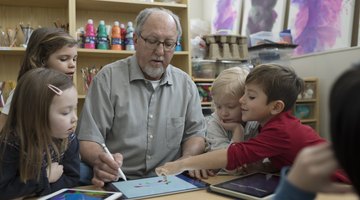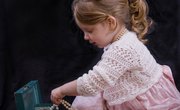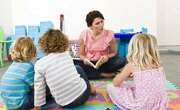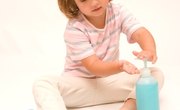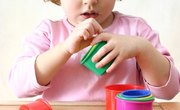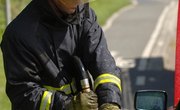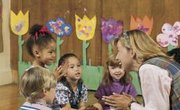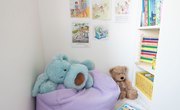Self-help skills are some of the most important things a preschool teacher can teach his students. They are the skills we use every day: dressing, tying shoes, washing hands, brushing teeth, feeding ourselves and so on. Though as adults we rarely think about doing any of these things, to preschoolers they can sometimes seem like insurmountable tasks. By teaching children these skills, we help them become self-sufficient.
Laces and Zippers
Providing children with lacing boards that they can practice tying shoes with and zipper boards to practice zipping with will help them master these skills. To make a lacing board, punch a parallel row of holes on either side of a piece of cardboard. Supply a shoelace for each board. To make a zipper board, cut out two pieces of cloth the same size and attach a zipper to them. Then attach the free ends of the cloth to a piece of cardboard using hot glue, heavy-duty staples or thick thread. Demonstrate how to use both boards to the children, then place the boards in the puzzle area for them to use.
Washing Hands
During circle time, tell the children that they will be pretending to wash their hands. Have the children copy you as you mime turning on the water, adjusting the temperature, getting soap, washing your hands, and rinsing them off. As you wash your hands, have the children sing the ABC song, telling them that this is how long they should wash their hands before they rinse the soap off. Make a habit of having children wash their hands before each meal and snack, and remind them to sing their song as they do.
Dressing
Provide plenty of slightly over-sized costumes and clothing in your classroom's dramatic play area. This will give the children a chance to practice putting on and taking off shirts, pants, shoes and jackets. You can find a wide variety of clothes at a local thrift store. Also provide plenty of dolls and doll clothes that the children can dress and undress, which also will help them learn dressing skills.
Setting the Table
Trace the shapes of a cup, fork, spoon, knife, plate and/or bowl onto as many sheets of 9-by-12-inch construction paper as there are children in your class. After you are finished tracing, laminate the sheets of construction paper. If you do not have access to a laminator, you can cover the front and back of each sheet with clear contact paper. When you are done, use the sheets as place mats and have the each student set his or her place setting, using the tracings on the place mat as a guide.
Related Articles
Writer Bio
Living in Minneapolis, Minn., Jan Radder has over eight years of experience in early childhood and elementary education. He also also spent time working in the low-budget film industry. Radder earned a Bachelor of Arts from Eugene Lang College in 1992 and graduated from Augsburg College's Licensure Program in elementary education in 2001.

